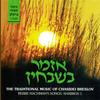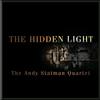2: Songs, the Breslov Research Institute’s “L’cho Dodi,” 1986, and Andy Statman’s “Breslever Lecha Dodi,” 1998.
In addition to his expansive series of philosophical sermons and his celebrated stories, Reb Nakhman is also credited with the composition of several liturgical melodies known as nigunim. These melodies can be used in solitude or communally, either without words or adapted to specific prayers or psalms, as an aid to meditation or to formal worship. Since these melodies were not transcribed in formal musical notation, it is likely that not all of the numerous melodies attributed to Reb Nakhman were actually his. It is also likely that many of the melodies he did create were adapted from Eastern European folk songs, including songs originally sung by non-Jews in Polish or Ukrainian.
Perhaps the most famous nigun attributed to Reb Nakhman has been used as a melody for the Friday night hymn Lekha dodi (“Come, My Beloved”), which welcomes the arrival of the Sabbath, poetically personified as a bride. These YouTube clips feature Reb Nakhman’s Lekha dodi nigun performed in two strikingly different ways. The first, produced by the Hasidic organization the Breslov Research Institute, is a traditional arrangement with vocals. The second, by the klezmer and bluegrass musician Andy Statman, is a jazz-influenced instrumental. Statman, though not strictly Hasidic, is an observant Jew who has participated in and performed at pilgrimages to Uman on several occasions.
Suggested Activity: Can you imagine ways in which melody (not lyrics, but melody) contributes to religious worship or spirituality? To community? Are there ways in which storytelling contributes to these experiences as well? What role might “The Loss of the Princess” play in contributing to religious worship, meditation, and communion? If a bride is used in Lekha dodi as a symbol representing the Sabbath, then might the princess in “The Loss of the Princess” represent a religious concept as well? Break into groups and have students make lists of what the princess could possibly symbolize.
Research has suggested that Reb Nakhman may have developed “The Loss of the Princess” from a Polish folk tale. With this in mind, ask students to think about which elements, symbols, and motifs in “The Loss of the Princess” might have been borrowed from other European storytelling traditions, and which seem to be uniquely Jewish and/or uniquely Reb Nakhman’s.
Sources: Breslov Research Institute, “L’cho Dodi,” Nov. 10 2015, video, 4:53, https://www.youtube.com/watch?v=OMvDie4CMLs&feature=emb_logo.
Andy Statman, “Come, My Beloved (Lecha Dodi) (Instrumental),” Sep. 10 2015, video, 4:41, https://www.youtube.com/watch?time_continue=3&v=GgrbQJtgkcI&feature=emb_....
L'cho Dodi
 Download video (0 bytes)
Download video (0 bytes)


